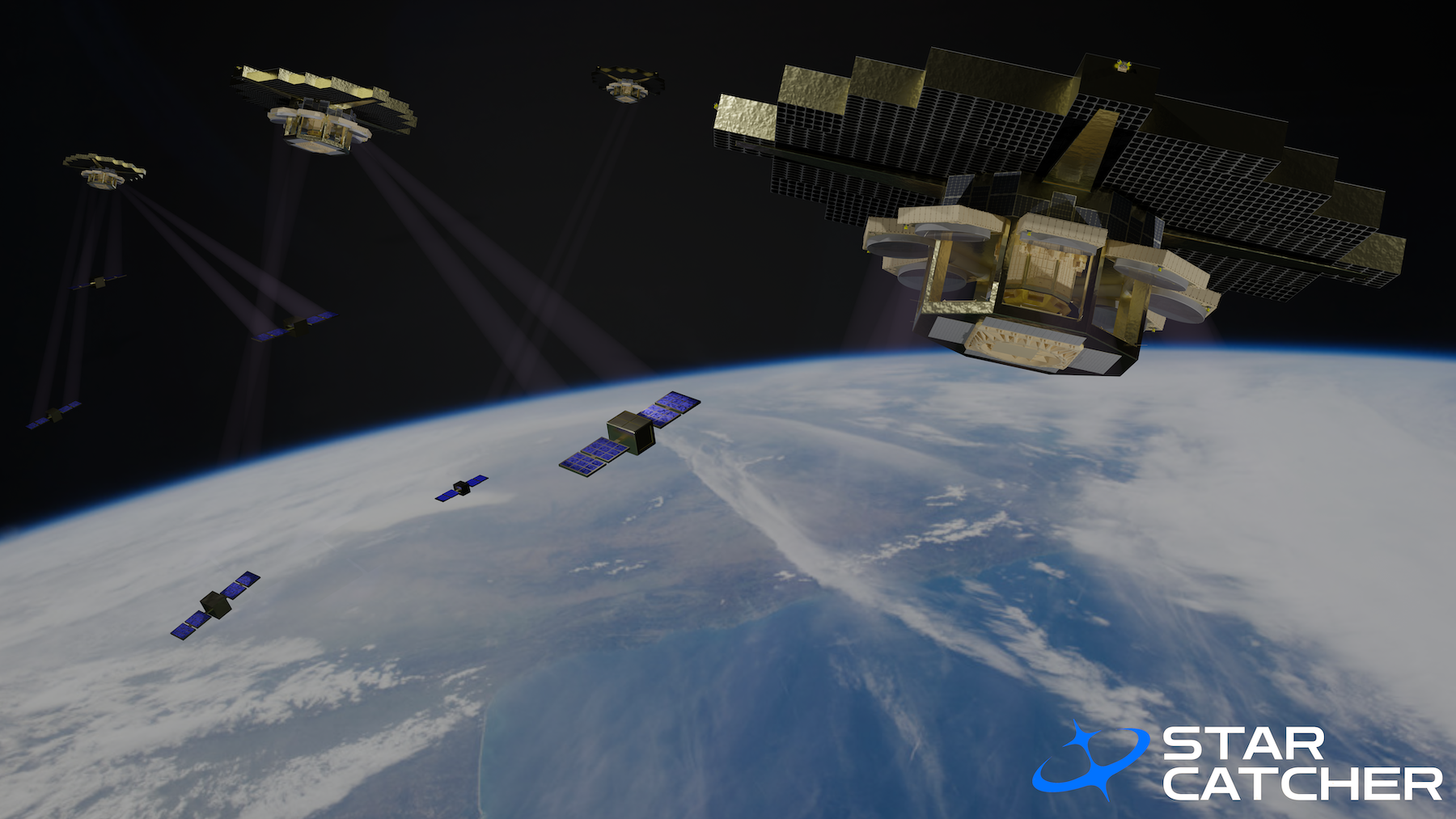Latest News

Rendering of the Star Catcher network. Photo: Star Catcher
Former Made in Space and Redwire leaders Andrew Rush and Michael Snyder are launching a new venture Star Catcher Industries to build the first power grid in space to bring more power to satellites in Low-Earth Orbit (LEO).
Star Catcher announced a $12.25 million seed round on July 24, led by Initialized Capital and B Capital, with meaningful participation from Rogue VC.
Rush, the former CEO of Made in Space and founding president and COO of Redwire, spoke with Via Satellite about the need to deliver higher power to LEO. He co-founded the company Snyder, who is the former Made in Space chief engineer and Redwire CTO, along with investor Bryan Lyandvert.
The founders observed that available power is a common constraint across every spacecraft, with today’s satellites in LEO operating with around 1,000 to 1,500 watts, which Rush compared to the amount of power a refrigerator uses.
At the same time, capabilities like high-bandwidth communications, satellite-to-cell connectivity, and using advanced processing units require more power, as much as 5,000 to 20,000 watts — more comparable to the amount of power used by a home or a small industrial park.

Andrew Rush
“We have this geographic concentration of customers in LEO that all have a common need,” Rush says. “We’re trying to build a power grid so we can send people more power to their existing solar arrays. They don’t have to fly a special transceiver to work with us.”
The company is planning for a series of satellites in high LEO, around 1,500 to 2,000 km in altitude, to collect a large amount of solar energy and transmit the solar energy to multiple client satellites at the same time. Rush says Star Catcher will be able to cover LEO with about 200 spacecraft, which will each serve as a power node.
The Star Catcher network will operate as a shared infrastructure, much like how cell towers operate, where multiple satellite operators use the service.
“It is a pay-as-you-go network,” Rush says. “People will pay us just like you pay your power utility to operate. But that enables folks to keep their initial CapEx expenditures the same or even shrink them.”
Rush says this will allow customers to continue using small form-factor satellites, but perform much more power-hungry missions.
Potential customers include any situation in which high power is valuable, whether that is remote sensing or communications for both commercial and defense. The Space Development Agency (SDA), for example, has called for technologies to enhance the power available to commoditized spacecraft buses.
The Star Catcher network could also be valuable for constellation life extension when batteries and solar power arrays have degraded over time, or to recover from mishaps when solar arrays don’t deploy fully or have issues.
Rush says the response from conversations with the industry have been positive and the company has signed around half a dozen letters of intent with a variety of different customers including remote sensing firms, space-based telecommunications firms, commercial space habitat companies, and several others.
The company is currently going through make-versus-buy decisions. Star Catcher will likely build the core power transmission system, but source some subsystems.
Star Catcher is working toward an upcoming ground demonstration of the technology, followed by a demonstration mission set for December 2025. In addition, Star Catcher currently has around 11 employees and is actively hiring and expects to double its workforce by the end of the year.
Rush says there’s now a need and customer base for a power grid in space with the number of satellites operating in LEO.
“I think the reason that this hasn’t been done yet is because we haven’t had this nexus of technological availability and a geographic concentration of customers,” Rush says. “The adoption of LEO as the primary place where people do business in space and operate in space makes it easier for us to service those customers and makes this a ‘now’ opportunity.”
Get the latest Via Satellite news!
Subscribe Now